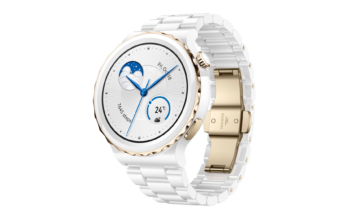Breastfeeding isn’t as simple as “baby plus nipple.” It can create a lot of unexpected biological quirks and emotional reactions, leaving many new parents blindsided. Here are some common breastfeeding experiences you may not have heard about, compiled by new moms and women’s health experts.
Breastfeeding may not be something that everyone likes to talk about, but it’s a pretty commons part of life. Unfortunately, since it can sometimes be perceived as taboo, there are a lot of things you might not be aware of—and knowing them ahead of time can help you prepare. Here’s what you need to know.
It burns calories
Experts estimate that it takes about 500 calories to make the 24 to 28 ounces of breast milk that the average mom makes each day. That’s the caloric equivalent of a sizable brownie (or, if you’re eating healthier, about 20 medium carrots). Burning anywhere between 200 and 500 extra calories for milk production each day is typical.
Breastfeeding alone usually isn’t enough to strip leftover pregnancy weight, but along with exercise and a healthy diet, the extra calories burned do add up.
Your nipples might hurt severely
Breastfeeding might look easy, but it can be quite painful for the first few weeks or months. Getting a baby to latch onto a breast at all, let alone correctly, can take time, and the typical 8-12 newborn feeding sessions a day can leave a woman’s nipples feeling raw and sore. The discomfort can range from slight tenderness to cracked and bleeding skin. Combine that pain with the tedium and exhaustion of caring for (and feeding) a newborn, and you can start to understand the tough job a nursing mom has.
Most women find that their breasts toughen up in about two weeks, but it’s important to get a baby to latch on correctly and contact a healthcare provider if the pain persists, especially between feedings.
Both partners might sexualize it
Although a nursing woman’s breasts take on a very different role as nutritional providers for a new baby, things may not have changed much for her partner. Chances are that a partner has a special fondness for those breasts, and seeing them—even with a baby attached to them—is still a turn-on. If it’s weird for you, feel free to tell your partner not to watch. But if not, you might welcome the company and the attention during feeding sessions.
Nursing mothers may get turned on, too. Sexual arousal during breastfeeding is a common, if confusing, occurrence. Many women enjoy breast stimulation in their sex lives long before they ever have a baby, and erogenous zones don’t simply stop feeling good when touched.
It’s important to note that the physical arousal a woman may feel is separate from anything emotional she feels towards her baby. Again, it’s incredibly common, despite it being a taboo subject for obvious reasons.
Breastfeeding might cause cramps
A baby’s sucking triggers the release of the hormones oxytocin and prolactin, and oxytocin creates uterine contractions. Although uncomfortable, these cramps (also called “afterpains”) are normal, and necessary to squeeze the uterus back to its pre-birth size.
Bigger breasts don’t equal more milk
Milk glands are what matter when it comes to milk production, not breast size (most of the breast is just fatty tissue). A woman with an A-cup can make the same amount of milk as a woman with a double D; she just has less fatty tissue compared to glandular tissue. There are other evolutionary reasons males may be attracted to larger breasts.
Hearing a baby cry could make your breasts start to leak
The release of breast milk, called the let-down reflex, usually happens after a baby has been sucking for about two minutes. The sucking triggers release of the hormone oxytocin, which stimulates milk production. Some women feel the let-down reflex as a tingling or a warmth.
But other stimuli can trigger production of oxytocin besides sucking, including emotional ones—like looking at a picture of your baby, thinking of your baby, or hearing a recording of your baby. Sometimes even hearing any baby cry, not just your own, can trigger a sensitive let-down reflex.
Breastfeeding can make you feel high
Many women report entering a relaxed, calm state during breastfeeding, which helps them bond with their babies. Others even say they experience euphoria, a breastfeeding high brought on by the release of the hormones oxytocin and prolactin triggered by the baby’s sucking. Some people call it being “milk drunk.”
As such, some claim it can be addictive. There’s not a lot of research to back it up, but some women swear that they get addicted because of the good feelings it brings (and the calories it burns). Penelope Cruz once stated that it’s “addictive. It’s hard when the day comes when you have to stop.”
You can still do it if you have breast implants or nipple piercings
Many women with breast implants can still breastfeed successfully. Incisions made through the armpit or underneath the breast tend to interfere with breastfeeding the least, whereas incisions around the areola can increase problems with feeding, including reduced nipple sensitivity or blocked milk ducts. Implant placement below the pectoralis muscle usually leaves the milk glands intact for future feeding.
Although women shouldn’t breastfeed with nipple jewelry inserted, the hole it leaves shouldn’t interfere with feedings. Breast milk actually comes from many holes at once; an additional one that you added yourself won’t cause a problem. However, newer piercings carry an increased risk of infection, so make sure they are fully healed before attempting breastfeeding.
Sarah A. Downey is a writer at Ovuline, a women’s reproductive health startup in Boston helping women get pregnant using mobile apps. Follow her at @SarahADowney.
This article was originally published in April 2014 and updated on Dec. 15, 2020 to update dead links and align the content with current Lifehacker style.



